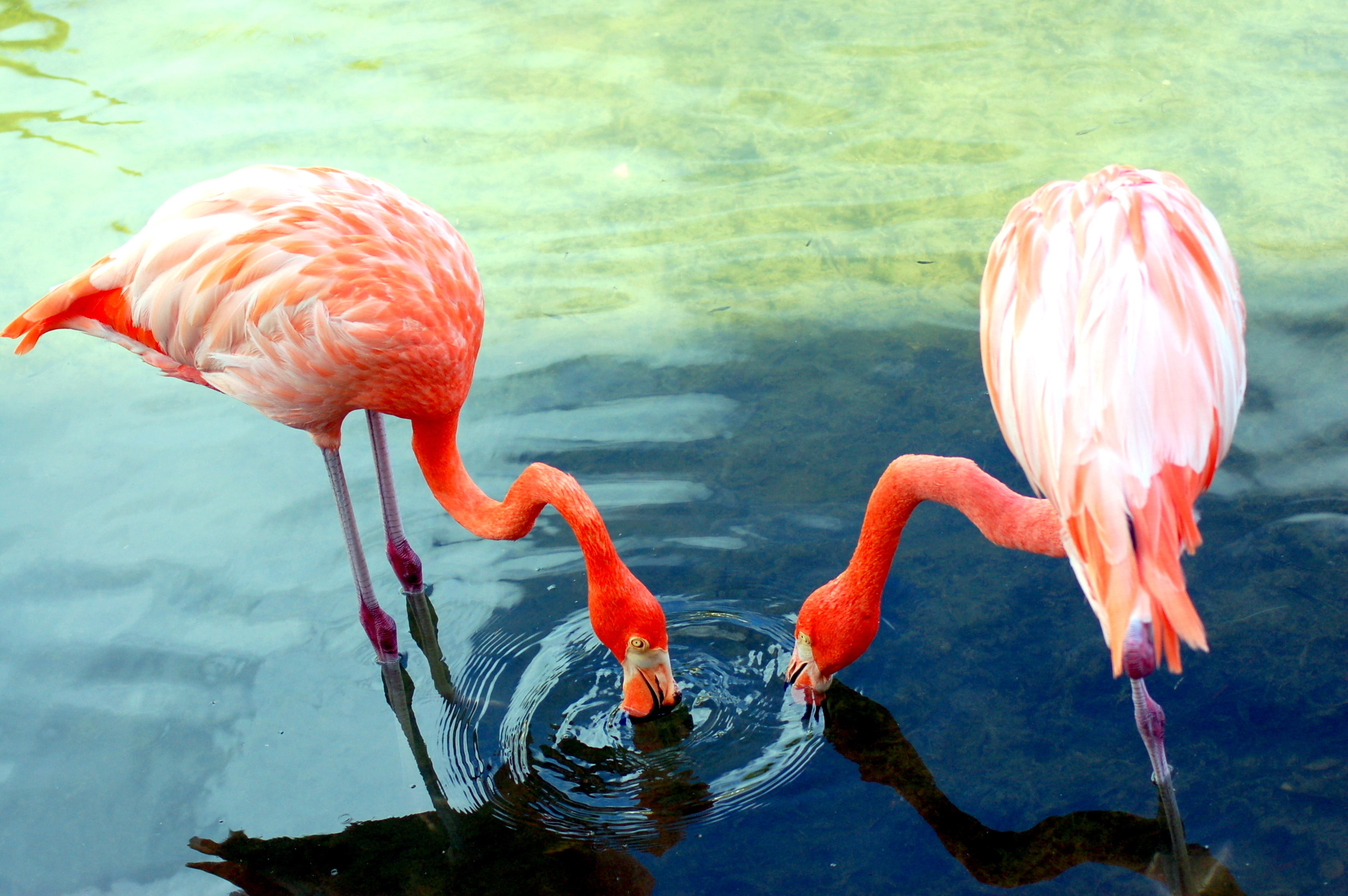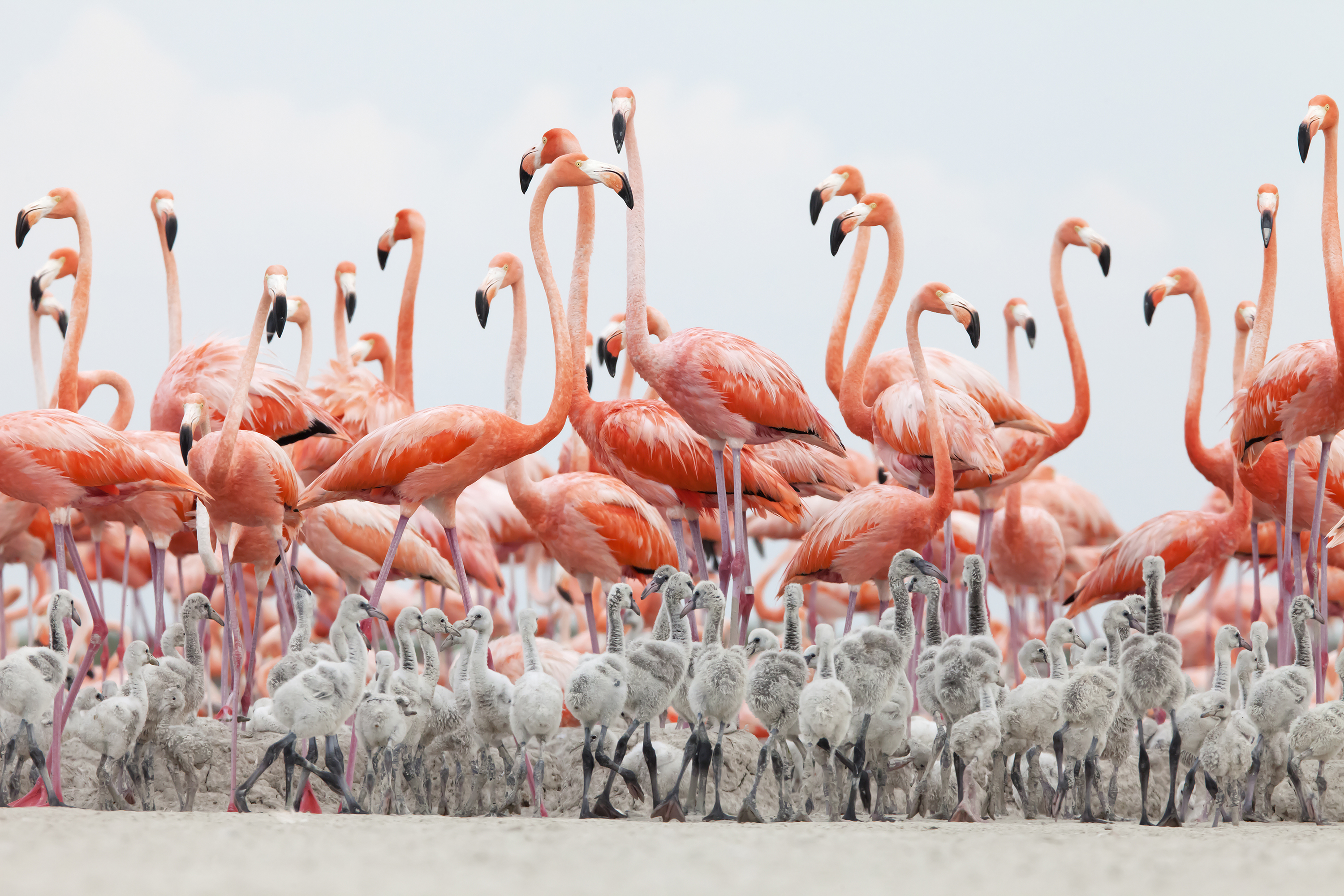Flamingo, << fluh MIHNG goh, >> is any of several birds with long, stiltlike legs and a curved bill and neck. Flamingos live in many parts of the world and spend their entire life near lakes, marshes, and seas.

Most flamingos stand from 3 to 5 feet (91 to 150 centimeters) tall. The color of a flamingo’s feathers—except for some black wing feathers—varies from bright red to pale pink. For example, flamingos of the Caribbean area have coral-red feathers, and South American flamingos have pinkish-white feathers. Most flamingos eat shellfish and small, plantlike water organisms called algae. They use hairlike “combs” along the edges of the bill to strain food from mud and sand. Flamingos, like ducks, have webbed feet.
Loading the player...
Flock of flamingos

Flamingos live in colonies, some of which have thousands of members. They mate once a year. Flamingos build a nest that consists of a mound of mud. Most of the females lay a single egg in a shallow hole at the top of the nest. The parents take turns sitting on the egg to keep it warm. The egg hatches after about 30 days. Young flamingos leave the nest after about 5 days and form small groups. But the young flamingos return to the nest to feed on a fluid produced in the digestive system of the parents. The adults dribble this fluid from their mouth into the youngster’s bill. After about two weeks, the young are herded into a group called a creche and start to find their own food. Flamingos live from 20 to 30 years in their natural surroundings. They can survive even longer in captivity.
There are several species (kinds) of flamingos. The greater flamingo ranks as the most widespread species. It lives in various parts of Africa, southern Asia, and southern Europe. The American flamingo lives in the Caribbean, as well as in parts of Central and South America. The lesser flamingo makes it home mostly in eastern and southern Africa. Other flamingo species live in South America.
